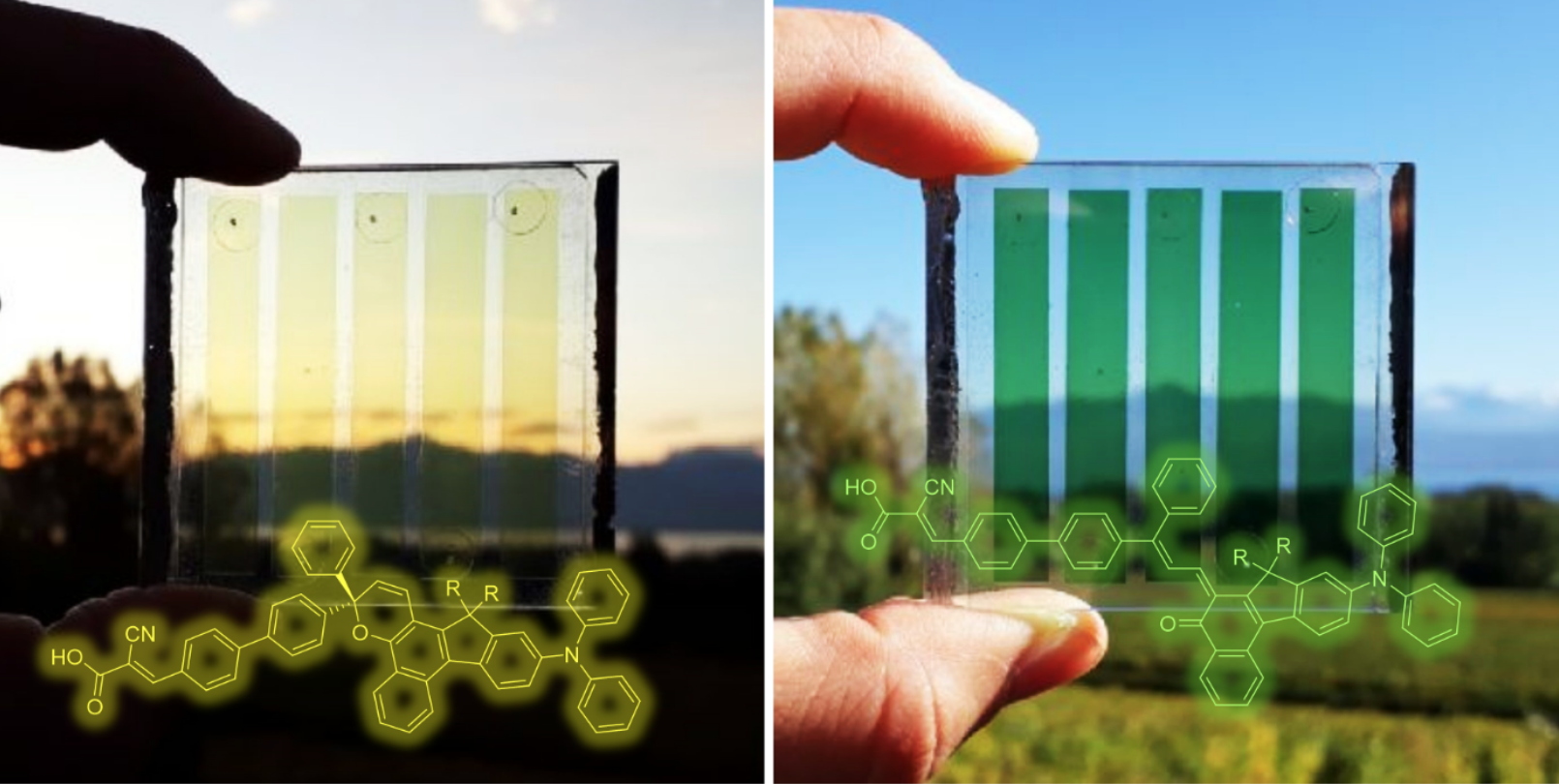These results were published in
Nature Energy on 8 June 2020.
Photochromic dye-sensitized solar cell have many advantages to offer - low cost, high efficiency (14%) even under low light conditions - but above all they differ from their competitors by their colour and transparency, which are of interest to architects.
By proposing cells whose transparency adapts to sunlight, researchers at the Interdisciplinary Research Institute of Grenoble (IRIG), have succeeded in solving the dilemma between transparency and photovoltaic efficiency. Like photochromic glasses, these cells darken under strong light to produce electricity and lighten as soon as the sunlight declines.
Researchers have developed photochromic dyes of different colours to integrate these cells of the future. Their formulation and structure were then optimized to combine photochromism and the photovoltaic effect. The resulting photochromic solar cells change from pale yellow to orange, red or even dark green under high light conditions, thus increasing their photovoltaic efficiency. A cell with an active surface area of 14 cm
2 produced 32.5 mW after colouring.
The first results in terms of stability are also very encouraging (at least 50 days without encapsulation,
i.e. without any protection on the cell). It remains to optimize the stability of these cells and the transition speeds between high and low luminosity.
This work, carried out in the Molecular Systems and nanoMaterials for Energy and Health UMR (SyMMES, CEA-CNRS-UGA) is supported by the ANR (OH-risk programme) and by an ERC Advanced Grant which began in September 2019.

Legend: Photochromic solar cells change from pale yellow to orange, red or even dark green in bright light, increasing their photovoltaic efficiency at the same time.
Credit: IRIG/CEA